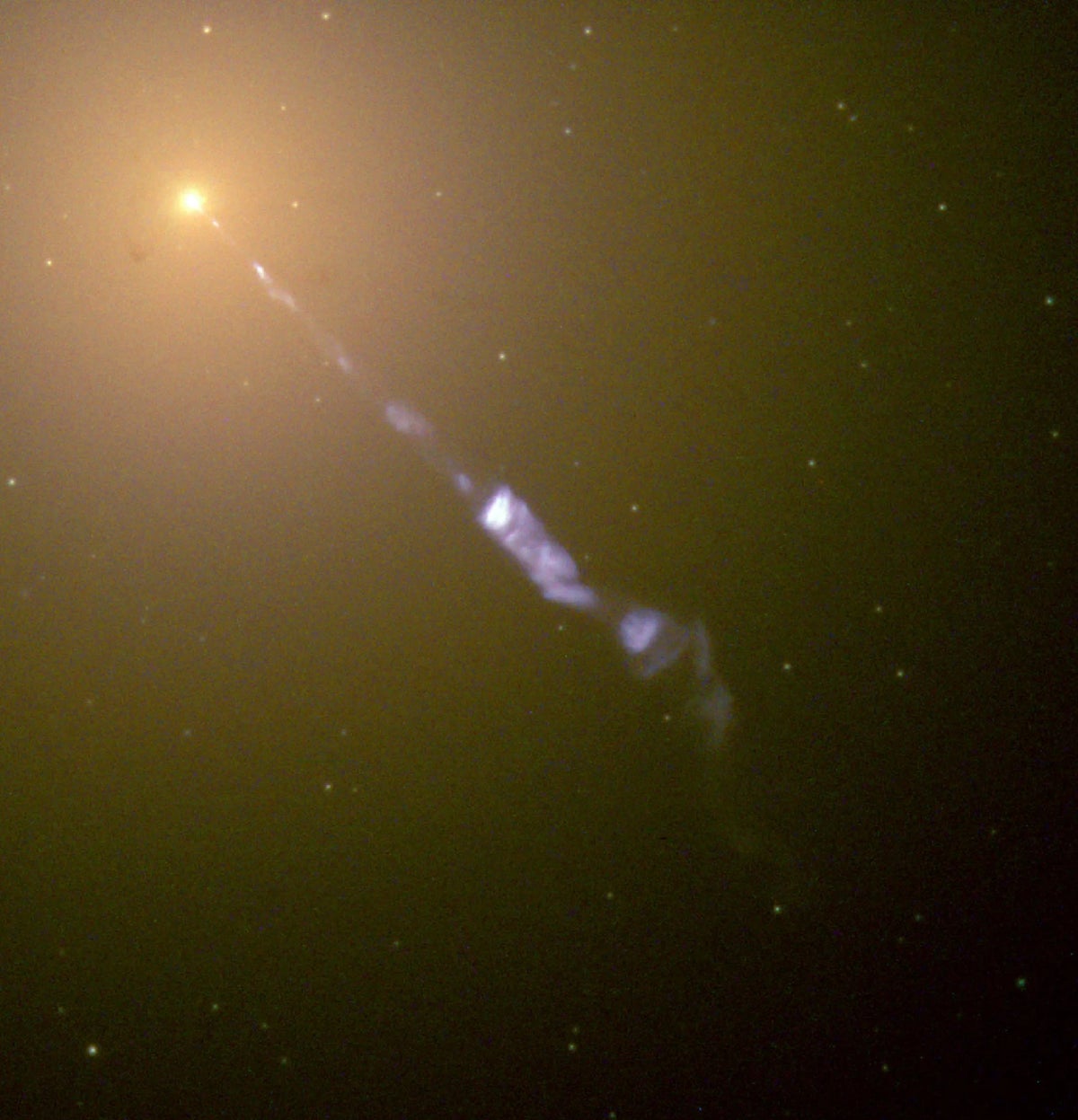
"Standing on Earth and gazing out into the night sky, you'd think our Milky Way galaxy is relatively calm. Oh sure, there's the occasional supernova and a bit of unrest as huge gas clouds collide and start to form stars. But as a whole, the vast cosmic neighborhood in which we live feels stately. Most nearby galaxies we can see look that way as well, just quietly going about their cosmic business. Tranquil. But that's not the case for all galaxies."
"Centaurus A is an overly enthusiastic oddball approximately 13 million light-years from Earth. It appears to be an elliptical galaxy shaped like a roundish cotton ball but with a striking dark lane across its middle. In the 1940s astronomers discovered it was inexplicably blasting out radio waves from its coreand subsequent studies across the ensuing decades showed that its center was also emitting high-energy x-rays and even gamma rays. Clearly Centaurus A has a lot more going on than you'd suspect at first glance."
"Observers eventually found many other similar objects, which were collectively given the catchall name Seyfert galaxies (after American astronomer Carl Seyfert, who discovered several of them). Then, in the 1960s, things got weirder. Astronomers started discovering objects that emitted powerful radio waves but, unlike most Seyfert galaxies, were very faint in visible light. Many of those newfound objects were incredibly far away and therefore extremely luminous, but looked so much like stars that they were dubbed quasi-stellar radio sources, or quasars for short."
From Earth the Milky Way appears relatively calm, with occasional supernovae and star formation but generally tranquil. Centaurus A, about 13 million light-years away, is an elliptical galaxy with a striking dark lane that emits strong radio waves, x-rays, and gamma rays from its core. Observers identified many similar active nuclei and grouped some as Seyfert galaxies. In the 1960s astronomers discovered powerful radio sources that were optically faint yet extremely luminous at great distances; these appeared star-like and were named quasars. Deep telescope images show quasars as extraordinarily bright central points that drastically outshine their faint host galaxies.
Read at www.scientificamerican.com
Unable to calculate read time
Collection
[
|
...
]